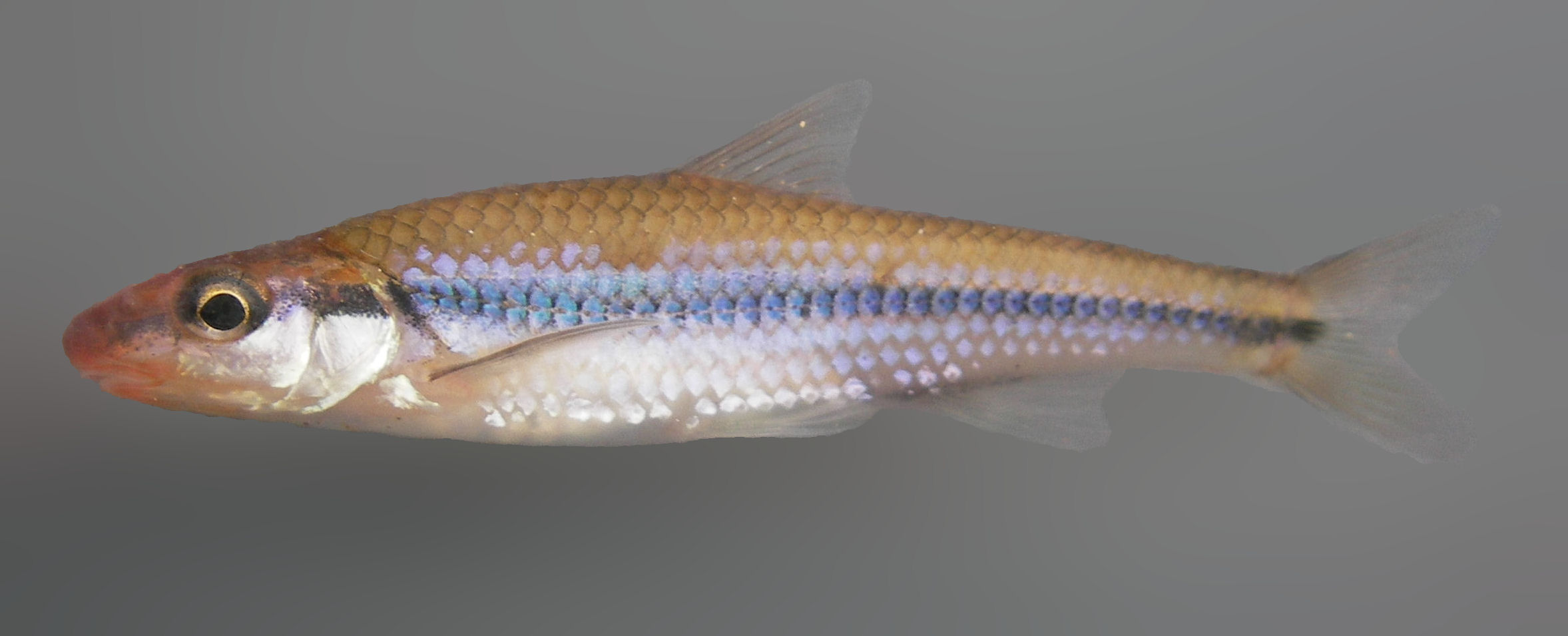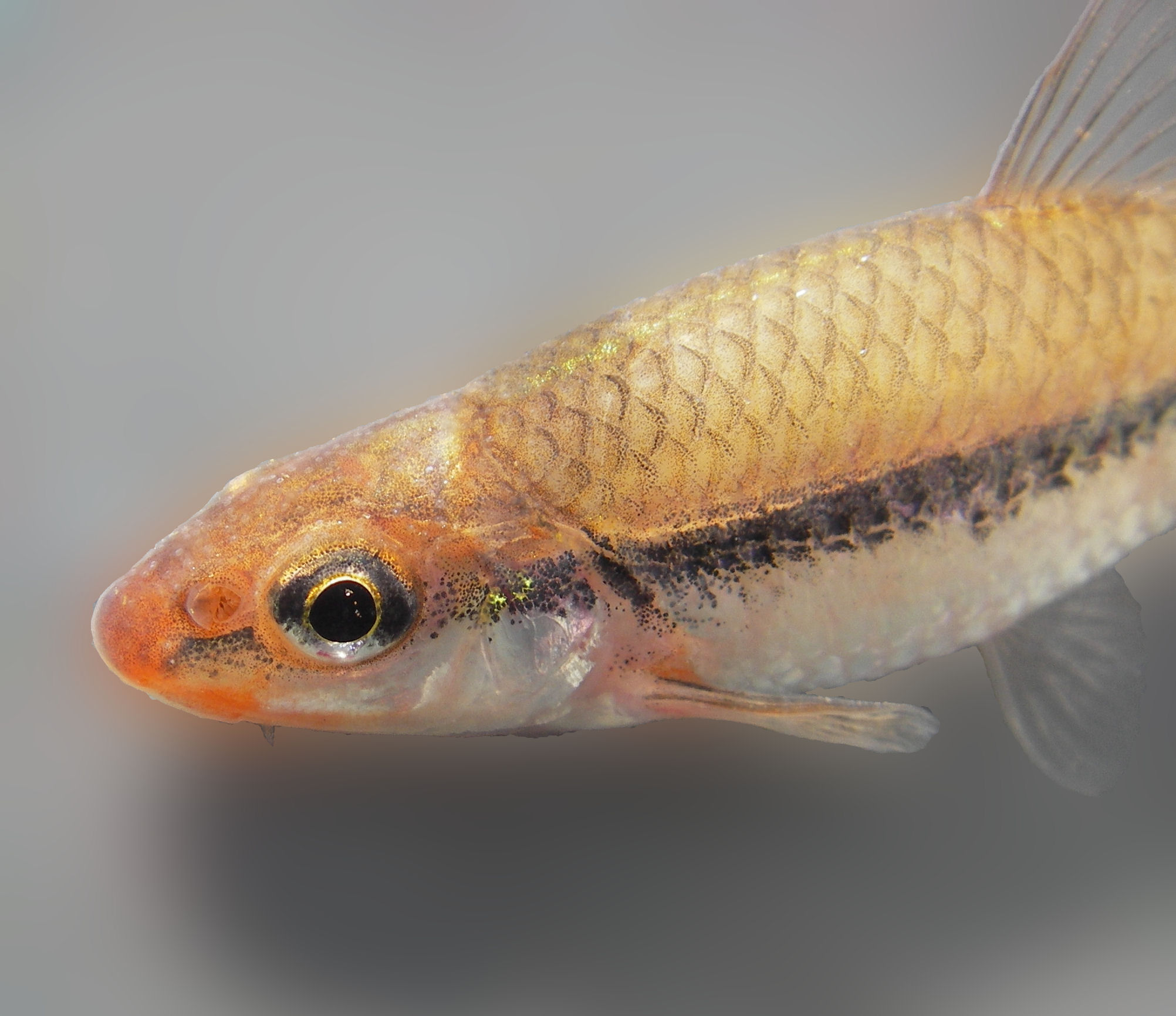Fish in Focus: Rosyface Chub, Hybopsis rubrifrons

© Michael Wolfe
Georgia Regional Representative
Statham, GA
Notropis, Nocomis, Hybopsis, Oh my! What is this straw-colored minnow I see in the Atlantic coast streams of South Carolina and Georgia, mixed in with the Notropis shiners and the Nocomis chubs? Looks a little like each, and at different times it has been categorized in each genus. But it is neither; instead it is Hybopsis rubrifrons, the Rosyface Chub. And this is one of those scientific names that really tells it all. Hybopsis means round faced, which fits the somewhat bulbous snout on this minnow. The specific name, rubrifons, means red forehead, which is the distinctive characteristic that separates this minnow from others in its genus. It is listed as being discovered in the South Fork of Ocmulgee River at Flat Rock, DeKalb County, Georgia and described in 1877 by the pre-eminent ichthyologist David Starr Jordan. But as a Georgia resident, I have to point out that it is actually the South River that is a tributary of the Ocmulgee River that runs through DeKalb County. And while there is no specific town called Flat Rock in this part of Georgia, there are several churches, cemeteries and schools in the area that bear the name. Unlike the shiners it closely resembles, especially the Spottail Shiner Notropis hudsonius, the Rosyface Chub has a barbel at the corner of the mouth. In other drainages, the Hybopsis species that will be seen is the wide ranging Bigeye Chub, Hybopsis amblops or maybe the Pallid Shiner, Hybopsis amnis. These are basically silvery fish, without much other color. And despite the name, in the case of the Rosyface Chub, there is not a lot of color for most of the year. Basically, just a straw-colored above, white-colored below, chub. But in the spring, they live up to their common name. The front of the fish becomes rosy red as the chub gets ready to spawn. The scales on the side of the fish seem to take on more of a reflective sheen, and the lateral line seems to stand out more. Around here, in the Upper Oconee River drainage, they are often in mixed schools with Yellowfin Shiners Notropis lutipinnis over Bluehead Chub Nocomis leptocephalus nests. A very colorful assemblage here in the streams of the South!
Pertinent Literature: Jordan D. S. 1877. Annals of the Lyceum of Natural History of New York v. 11 (nos. 11-12):330
